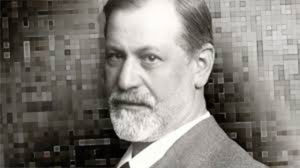Évolution des théories de clivage chez M. Klein
Résumé
L’évolution de la notion de clivage dans l’œuvre de Melanie Klein est illustrée à partir de la nécessité pour le Moi de lutter contre l’angoisse. Le clivage apparaît comme un concept clé dans la compréhension des premières relations objectales à l’œuvre dès le commencement de la vie. Sous sa forme passive d’abord, puis sous sa forme active, le clivage est conçu dans une double polarité : une fonction défensive précoce et un processus constitutif de l’appareil psychique. Le clivage de l’objet en un bon sein gratifiant et aimé et un mauvais sein frustrant et haï est indissociable du clivage du Moi en rapport aux processus d’introjection et de projection. Klein décrit dans ses élaborations théoriques plus tardives d’autres types de clivages, pathologiques cette fois, qui appauvrissent la vie psychique, par amputation du Moi d’une partie de lui-même. Des vignettes cliniques illustrent quelques aspects du clivage.
Samenvatting
Het verloop van de notie van splitsen in het werk van Melanie Klein wordt duidelijk wanneer het een noodzaak is voor het iK om tegen de angst te vechten. Splitsen verschijnt als een sleutelconcept in het begrijpen van de eerste object – relaties en dit van bij het begin van het leven. Eerst onder een passieve vorm en daarna actief, is splitsen geconcipieerd als dubbel – gepolariseerd : een vroegtijdige defensieve functie en een constitutief proces van de psyche. Splitsen van het voorwerp in, enerzijds een goede borst die voldoening en liefde schenkt en anderzijds in een slechte, frustrerende en hatelijke borst, is niet te scheiden van het splitsen van het iK in verband met het proces van introjectie en projectie. Klein beschrijft in haar latere theoretische uitwerking andere soorten splitsen, dit keer pathologische vormen, die het psychische leven verarmen, door amputatie van het iK van een deel van zichzelf. De klinische vignetten illustreren enkele aspecten van splitsen.
Summary
The evolution of the notion of splitting in the work of Melanie Klein is driven by the necessity of the ego to struggle against anguish. Splitting appears as a key concept in the understanding of the first objectal relationships and is active from the beginning of life. At first in its passive form, and then in its active form, splitting has two aspects: an early defensive function and a process which contributes to the constitution of the psyche. Splitting of the object between a loved, good breast and a hated, frustrating bad breast can not be separated from the splitting of the ego in relation to the process of introjection and projection.
M. Klein describes in her later work other types of splitting, this time pathological, which impoverish the psychic life by the amputation of the ego of a part of itself. Clinical cases illustrate some aspects of splitting.





